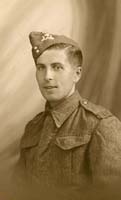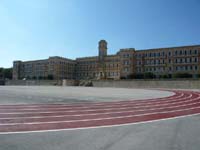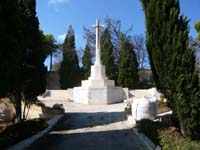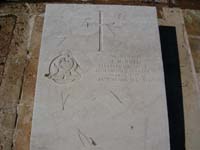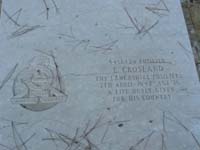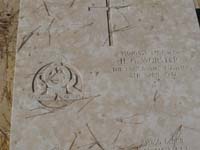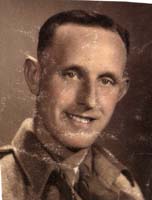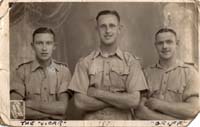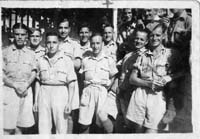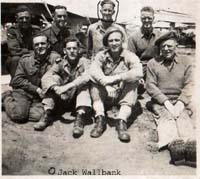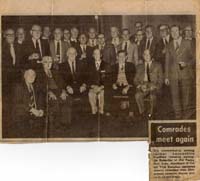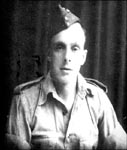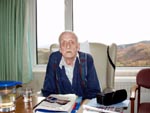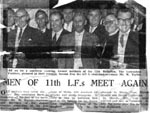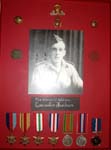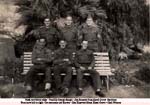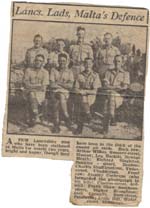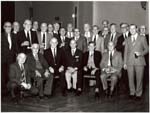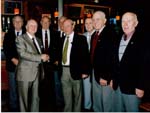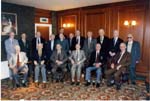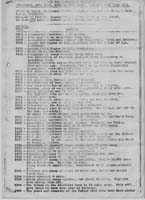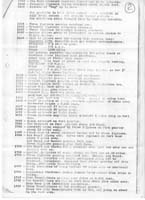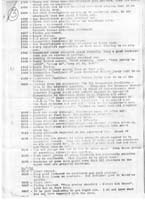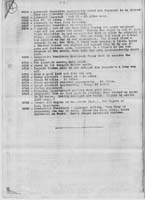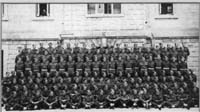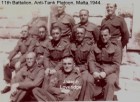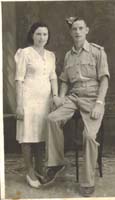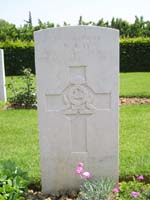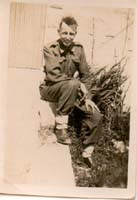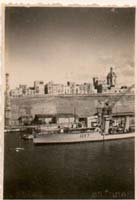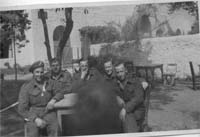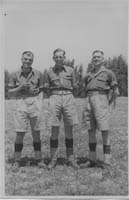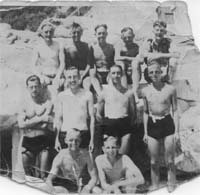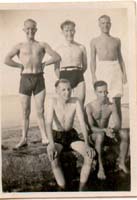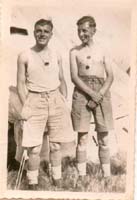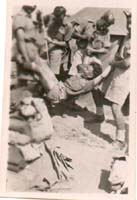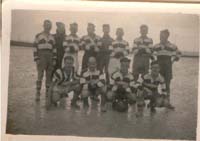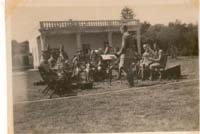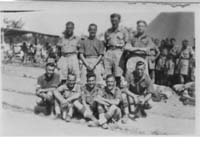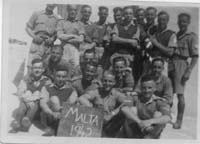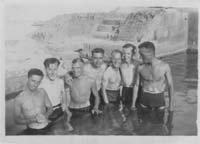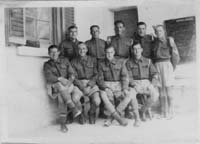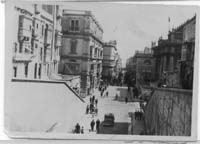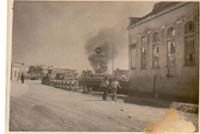|
11th Bn Lancashire
Fusiliers
Malta 1941 - 1944 |
|
. REFORMED ON 14th OCTOBER 1940 AT ROCHDALE The Co was Lt Col R C Harris.The
Bn moved to Dursley in Gloucestershire and from there assisted the people
of Bristol during intensive bombing raids. |
|
Eric Hulse
100 years old on 12th December. 2014 
|
|
XXth graves adjacent
to
|
|
line.kay@gmail.com Click on any photo to enlarge them |
|
34357337
Fusilier Cyril Watson In Service of King and Country Born in Eccles Manchester on 27th January
1915, married in August 1939 to Margaret he joined the Army in early
1940. His basic training took place in Littleborough, Rochdale after
which he was sent to Fraserburgh in Aberdeenshire, Scotland for a
while before travelling south to Shirehampton near Bristol.
I feel very lucky and privileged to have
had my Dad come back when so many young men were lost in his war and
I really feel proud of him for coming through it and what he and his
comrades achieved. David J Watson ISM (Cyril's son)
|
Army Career - World War I1 Joined up in June 1940 - 50th Holding Battalion
Lancashire Fusiliers January/February 1941 at Cruden Bay in Scotland building beach defences, attached to the Royal Engineers. May/June 1941 at Nitshill In Glasgow kitting out for middle east. Five days embarkation leave prior to sailing in June 1941. During the third week of June 1941 sailed from Gurrock on the River Clyde to an unknown destination - Code "Z". Spent seven days at sea with the Atlantic convoy on board the "Louis Pasteur", a 36,000 ton French liner. After seven days arrived in Gibraltar at noon on Saturday. Lancashire Fusiliers had six hours to disembark and re-embark with all battalion stores and weapons onto HMS Edinburgh. Sailed at 6.00 p.m. Saturday back into the Atlantic convoy of naval craft, tankers and supply ships. After dark, sailed through the Straights of Gibraltar into the Mediterranean with full naval escort. Sunday morning spotted by Italian planes and for four days were continually attacked by Italian and German planes, e-boats and submarines until Thursday morning. Arrived in Malta late afternoon, still under air attach. Endured the Battle of Malta for nearly three years from July 1941 to March 1944. Then embarked for Italy for the Italian campaign up to V E Day on 8 May 1945. First British Division attached to American 5th Army. Front line combat in Cassino, Rome, Apennines, Arrezzo, Florence to the Gothic Line. Hard bitter fighting. Relieved to have four weeks Leave in Anticipation of Python (five years service) to UK in January 1945. Returned to Italy in February 1945 after cook's tour of middle east. Try to catch up to Battalion who had been pulled out and sent up to the Persian border (Iran). We arrived at Infantry Reinforcement Training Depot at Biano outside Naples at the base of Mount Vesuvias. Lava dust for breakfast, dinner and tea enjoyed with the stink of sulphur. From the IRTD to Rome to camp outside Rome as usual waiting for orders when V E day came - 8 May 1945! Handed all weapons in and returned to Naples. Embarked on "Stratheden" for final sail to UK. Arrived at Liverpool and entrained to Hunstanton, the Lancashire Fusiliers holding depot. After one month's leave returned to Hunstanton and sent to Sandringham House in the Queen's Estate - known as BAX force, general duties and guards. Sent up to Morpeth in Northumberland on NCOs course and made up to Sergeant. Sent with Sergeant Dom Browskie to Launceston in Cornwall to fall camp and guard duties for German repatriated prisoners of war coming from America and Canada. Once in the camps all prisoners were graded, searched and sent back to Germany. From here Sergeant Leslie Hill was demobbed in June 1946 sent in by
|
|
War
Diaries in slide show
Use the Arrows at top of War Diary to go to next Page of Diary |
|
1940
England 21 pages
|
|
1941
England 25 pages
|
|
1942
Malta 144 pages
|
|
1943
Malta 155 pages
|
|
1944
Malta 155 pages
|
|
1944
Italy 29 pages
|










